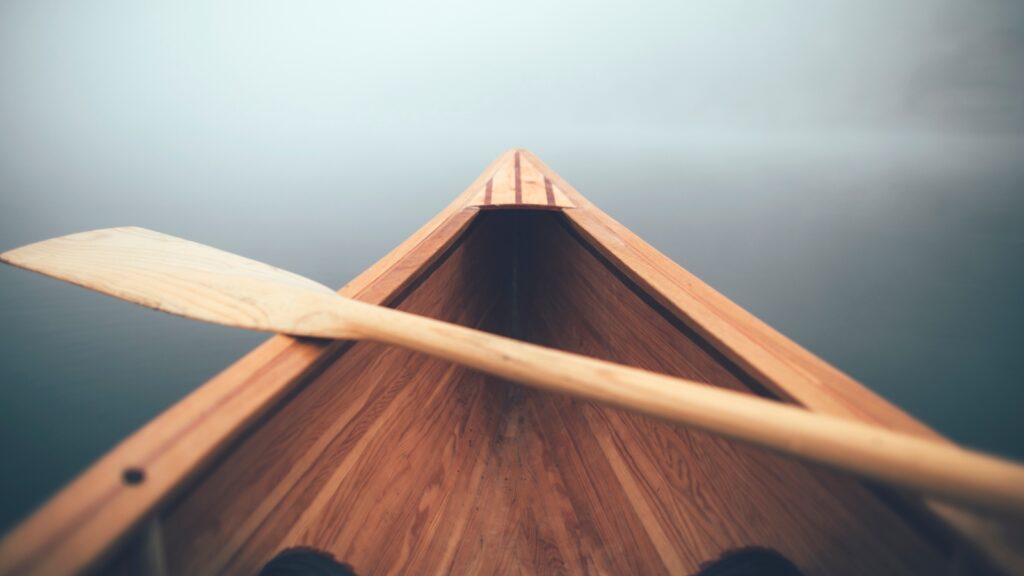iStockphoto / Popartic
In 5 months of paddling his 1982 Sawyer Loon canoe from Escanaba Michigan’s Upper Peninsula to the Chesapeake Bay in Maryland, Peter Frank has made it roughly 25% of the way through his journey of America’s ‘Great Loop.’ From Chesapeake Bay, he will head south around the Florida Keys then north/west in the Gulf of Mexico until he reaches the mouth of the Mississippi River south of Venice, Louisiana and then he’ll head due north back to where he started to complete the 6,000 mile canoe journey.
Peter has been documenting his journey along the way across his social media channels. It wasn’t until I saw a few articles pop up this week about his journey that I realized I’d seen his clips on TikTok before. And it wasn’t until a story from ABC News that I came to learn why he’s doing this 6,000 mile canoe paddle in a vintage boat: “a way to express his gratitude for still being alive and having the ability to take on the physical challenge.”
That quote is pretty ominous but his backstory certainly matches up. About 10 years ago, a then-teenage Peter Frank was hiding inside a pile of leaves to jump out and spook one of his friends when a car full of teenagers driving by drove through the pile of leaves, unable to see him inside of it, and he suffered 14 broken bones and was left nearly paralyzed from the incident.
Flash forward ~10 years and he has embarked on the ‘Great Loop Project‘ which he began on June 27th. Before we get into the ins and outs of this project, here is what the full paddle looks like:

Google Maps
Paddling ‘The Great Loop’
This is not Peter Frank’s first rodeo, so to speak. His first ‘project’ as he calls them, was a journey from Appleton, Wisconsin to Phoenix, Arizona all while riding a unicycle. That took him 99 days on a unicycle traversing 2,400 miles. His second expedition was backpacking from Phoenix to California. After that, he spent 144 days paddling 2,400 miles of the Mississippi River from Lake Itasca to the Gulf of Mexico. That 3rd project took place from 6/20/22 to 11/11/22.
Following that paddle, he biked 700 miles over 65 days through Louisiana, Mississippi, Alabama, and Florida. He then circumnavigated the state of Florida in a canoe from 1/28/23 to 5/19/23. Following that, he took a month off to recover and then spent 28 days back on the Mississippi River helping guide an old friend of his on their own expedition. There is a short film of that ‘Headwaters’ expedition:
And that brings us to the Great Loop Project where Peter Frank is paddling 6,000 miles from Michigan’s Upper Peninsula to the Chesapeake Bay and then down and around Florida up to Louisiana and then up the Mississippi River before breaking off back to Michigan’s Upper Peninsula.
Unreal.
There really is no way of knowing how long this trip will take him. On his ‘where is peter frank’ website, there’s an option to ‘send chicken’ and help feed him $10 at a time. I just sent $10 while pouring over this story. Why not? Dude’s gotta eat.
Now that he has made it to the Chesapeake Bay he has a pretty straight-forward paddle south down and around Florida and then back up to the Mississippi River mouth in Louisiana but that’s where I’m getting stuck on how this is possible. On his website, he says that portion of the journey will be a 1,600 mile paddle upstream and against the current. This is the MIGHTY Mississippi River we are talking about and presuming it’s a few months from now when he gets there he will be paddling against snow melt in the north.
The Mississippi River flows the hardest in the Spring from snow melt and rains. So the timing of this will actually make his 1,600-mile paddle upstream more difficult than any other time of the year. But the flip side of that is he essentially has to be heading South around now as the Northeast slips into Winter.
Incredibly inspiring
I’ve been in need of some inspiration lately. This has been a hard year and coming across stories like this of people seeking to accomplish things the rest of us would never imagine is what brings me inspiration.
Will I get out and paddle 6,000 miles after I finish writing up this story? No. Will I bust out my kayaks from the garage this weekend and hit the water? Probably.
I’m taking this as a sign to start planning my next great adventure. You should too.

